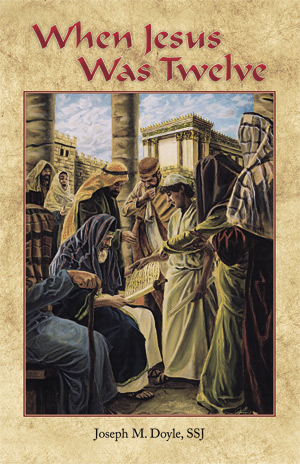

We’ve all read and heard the story of 12-year-old Jesus accompanying Mary and Joseph to Jerusalem for the annual Passover feast (Luke 2:41-52). Like any party with a whole gaggle of friends and relatives, even the best of parents lose track of their kids.
Kids move too fast and without GPS tracking, Mary and Joseph assumed, as they began the journey back to Nazareth, that Jesus was with said friends and relatives. When Mary and Joseph realized that Jesus was not with them, they frantically searched for three days before finding Him with the elders in the Temple.
I’ve told readers that they should never let the significance of names and numbers escape them. At 12, Jewish boys start to get serious with their religious training. The number 12 is a number of completion in Jewish culture: 12 tribes, 12 Apostles. And searching for Jesus for three days, I don’t want to hear from anyone that they do not know what that means!
Fr. Joseph Doyle, SSJ (Society of Saint Joseph, not Jesuits, for all you cradle Catholics), brings us a book that combines the scriptural account along with fictional characters and situations, which help deliver a seamless narrative for both our edification and enjoyment.
Fr. Doyle begins by setting the scene for us, showing us where Nazareth is in relation to Jerusalem, describing the scenery, and placing us squarely in the First Century. He details the everyday, something that can help us grow closer to the Lord in the here and now.
The journey begins in the early morning hours with Mary preparing food, clothing, and bedding. We see Jesus and Joseph on the precipice, the very spot where later, the unnecessarily agitated town will attempt to give Jesus the boot after His first homily in the temple. Jesus and Joseph pray together as father and son.
Along the way, we meet the very people who will later comprise the cast of the Gospel stories: Mary, Martha, and a young fellow named Lazarus are members of a family whose father is a friend of Joseph’s. We meet Jochanana, shortened to John, the son of Elizabeth, who whispers to Mary: “who am I that the mother of my Lord should come to me?” (Luke 1:43)
The importance of this book is that it creates for us a complete cultural context with which to further understand and embrace our faith.
In Jerusalem, we witness that intensity of the Passover season. Joseph of Arimethea invites Joseph and family to spend the Passover feast with him and his family. We follow the purchase and ritual slaughter of the Passover lamb. One gets a supermarket feel to the whole event: line up to purchase the sacrificial lamb, line up to have priest accomplish the ritual slaughter, and haul the lamb home for the Passover feast.
Jesus’ draw to the temple is understandable, not only because He is now 12 and at the cusp of manhood, but that we know He is the Son of God — His nature inherent in the temple.
In the context of the culture and what happens on a major trip like this, thus, we find that Jesus being left behind is not wholly incomprehensible. Family was large and included everyone; the terms for cousin, for example, didn’t really exist as they do in our cultural lineage structure. Everyone was brother and sister.
When they return to Jerusalem to find Jesus at the temple, His reply to Mary is apropos: “Why were you looking for Me? Did you not know that I must be in my Father’s house?” (Luke 2:49) Granted, this answer might seem snippy from our own children, but Fr. Doyle makes it clear to us that both Mary and Joseph understood who Jesus was.
Fr. Doyle’s book is eminently readable and a revelation, giving us a clearer vision of the life and times of Jesus of Nazareth. Published locally by Tau Publishing.






